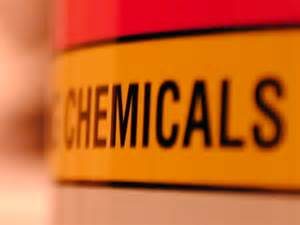Across the globe, regulations continue to change to meet the growing need for safety in the chemical and material market. The European Union, through its European Chemicals Agency (ECHA), has adopted the REACH regulation, which stands for Registration, Evaluation, Authorisation and Restriction of Chemicals. Though REACH came into being back in 2007, regulations have continued to evolve as more chemical research and information becomes available. If a substance’s risk is deemed unmanageable, it can be banned.
 For manufacturers, importers, and downstream users in the European Union, the burden is on these companies to ensure the products they are working with or handling follow REACH guidelines. There are a couple of categories to be especially mindful of – Substances of Very High Concern (SVHC), and Substitute it Now (SIN). SVHCs include carcinogens and mutagens, and toxic bioaccumulative agents. Over the years, the list of SVHCs has grown from about a dozen original chemicals to include 163 different substances, most of which are found in shrink boot adapters, backshells, resistor fixed single-surface mounts, and other products.
For manufacturers, importers, and downstream users in the European Union, the burden is on these companies to ensure the products they are working with or handling follow REACH guidelines. There are a couple of categories to be especially mindful of – Substances of Very High Concern (SVHC), and Substitute it Now (SIN). SVHCs include carcinogens and mutagens, and toxic bioaccumulative agents. Over the years, the list of SVHCs has grown from about a dozen original chemicals to include 163 different substances, most of which are found in shrink boot adapters, backshells, resistor fixed single-surface mounts, and other products.
The SIN list includes a staggering 830 substances that are commonly found in resistors, power management products, wires and cables, rubber and plastics, and many EMI shielding gaskets. All together, we can expect to see about 1,000 substances on the REACH substance list in the coming years. Inclusion on the SIN list indicates that ECHA has determined that these materials may be harmful, and it is, more or less, their warning to designers to try and avoid the inclusion of these materials in their product, as it is likely that they may be moved to the SVHC list at some point in the future.
In addition to REACH regulations, the EU mandates that all electrical products meet RoHS (Restriction of Hazardous Substances) regulations. Notably, this restriction limits the amount of heavy metals such as lead, mercury, and cadmium in electronic devices.
Therefore, it’s important for manufacturers to select materials that comply with REACH and RoHS regulations. Even if the manufacturers themselves are not in the European Union, it’s important to consider the needs of potential customers around the world during product development.
At Vanguard Products, we take great pains to insure that products in both our EMI shielding gaskets and in our general rubber goods are fully compliant with the current SVHC and RoHS restrictions. We also have a vision toward the future by limiting our use of substances that are on the SIN list, as they are highly likely to be restricted at some point in the near future, causing our customers potential issues and expensive requalification.
For example, Nickel/Graphite has been promoted extensively in the EMI/RFI shielding community for use in electronics products. With an eye to the future, we have avoided using this type of material in our Ultra-Vanshield product line, as it would appear to be targeted in the near future by ECHA for reduction or exclusion, as numerous nickel compounds are currently on the SIN list.
In many tubing applications, “rubbery” plastics, such as PVC, commonly need to include significant amounts of plasticizers that have been included on the SVHC listing in order to achieve their rubber-like feel. These plasticizers can be dangerous as they can leach into the fluid flowing within the tubes. Our Vansil and Vanprosil silicone products do not need to include these plasticizers, and as such, are more easily compliant to the SVHC regulations.
The bottom line is that when choosing materials and specifying products, it is important to keep in mind not only the current restrictions, but what the future holds. Selecting Vanguard Products for either rubber applications or EMI shielding applications makes that task much easier.